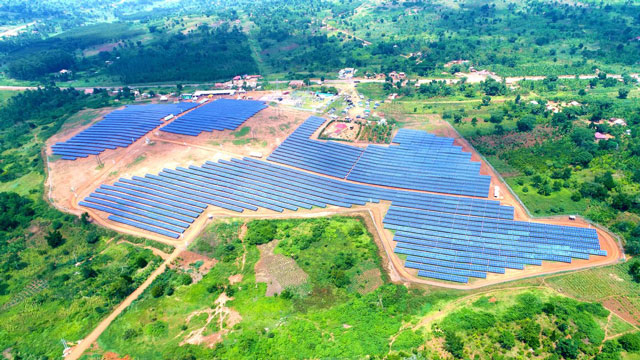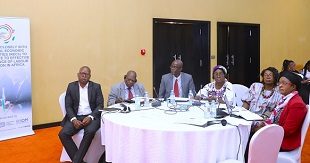
Developing economies across Africa are in a unique position to invest in cleaner sources of power at a lower cost
COMMENT | BHAVTIK VALLABHJEE | Africa is a continent blessed with an abundance of natural resources – water, wind, thermal coal, natural gas, and of course plenty of sunshine – but the electrification rate across the continent remains extremely poor.
Of the 1.2 billion people who live in Africa, it’s estimated that more than 650 million have no access to energy, relying instead on fossil fuels like diesel for electricity generation and harmful cooking fuels like wood, charcoal, and kerosene.
This sets Africa back on meeting energy access goals and diminishes the continent’s economic growth by two to four percent every year. We have much to learn from developing countries across Asia that are making significant progress, with many on track to reach universal energy access by 2030.
India, with a 1.34 billion population, will reach universal access by the early 2020s. We believe Africa presents a compelling energy investment case for our long-standing Indian trade partners, for many reasons.
Developing economies across Africa are in a unique position to leapfrog more developed nations by investing in cleaner, environmentally friendlier sources of power at a lower cost – key factors contributing to improved use of renewable energy power across the continent. Countries like Morocco, Tanzania, Mozambique, Kenya, Mauritius, South Africa, Uganda and Ghana have taken initiatives in the development of renewable and clean energy projects, particularly solar and gas to power.
With the current low cost of gas compared to several years ago (through the shale gas revolution in the USA), gas power plants have increasingly become more competitive compared to clean coal technologies and are an affordable solution. Although renewable energy resources hold great promise and can provide energy while overcoming Africa’s infrastructural challenges, this form of energy would still need to be stored. That is why lithium ion batteries could be a game changer for Africa.
There’ve been massive investments in the field of battery storage research and development by leading global companies like Samsung, Tesla, and Total over the past five years. As the costs of Li-Fe battery storage falls, coupled with already low cost of solar photovoltaic modules, the future of the electricity market could be solar photovoltaic plants.
South Africa alone holds almost 80% of the world’s known reserves of manganese (producing 5.3 million MT per annum) – an important component of the Li-Fe battery. A growing market will justify the creation of a local battery production plant, but serious investment is first needed for a large-scale facility.
Mozambique has the 9th largest gas reserves in the world while Tanzania shares the same gas-rich
Rovuma Basin. One of the region’s largest project financing transactions (Coral LNG) closed recently in
Mozambique with a deal value in excess of USD30 billion, with two more similar deals imminent.
Many other countries in Africa like Nigeria, Ghana, Angola, and South Sudan have impressive oil and gas reserves. The spin-off effects from this will be huge for local economies with the possibilities of cracker plants, fertiliser and petrochemical plants, pipelines, gas-to-power plants, and LNG export terminals posing sizeable opportunities for Indian corporates.
The political and economic climate across Africa has steadily improved over the last two decades, and
despite the frustratingly long lead times for infrastructure projects, on a risk-return adjusted basis, Africa boasts better returns than developed markets. With the right investment in the right infrastructure, and with the right partners, Africa is well poised for solid socio-economic growth and sustainable development.
****
Bhavtik Vallabhjee, is the Head: Power, Utilities and Infrastructure at Absa Corporate and Investment Banking.
 The Independent Uganda: You get the Truth we Pay the Price
The Independent Uganda: You get the Truth we Pay the Price



To his Excellency Dr Magafuli president of Tanzania.
Our nation continues to live in darkness, despite the good efforts you have made to bring light into our darkness. How disappointing it must be for you to see that Tanesco continue to disappoint and undermine your best efforts. I have to openly question what motivates them.
Tanesco had recently re run the Independent Power Producer(IPP) tender as out lined below. They did this because they could not get the process correct and transparent.
http://tenders.ppra.go.tz/model/tender_notices/1084_ADVERT-COAL%20PDF.pdf.pdf
We still do not know how many IPP’s submitted their formal tenders purchased through Tanesco. What we do know is that some of the applicants have been advised that they did not qualify, without giving reasons. Transparency is so lacking we do not know which of those IPP’s are ‘late’ or ‘early’ stage. This matters as ‘late’ stage contractors may be able to start work immediately, whilst ‘early’ stage applicants will have to follow a very long lead in time whilst conducting various feasibility studies and accumulate many licences. This is a very long and expensive process, not for the feint hearted or those who do not have financial integrity.
In this regard, I was very surprised to see that a tender has been awarded to Stamico in conjunction with a Chinese power plant operator. Are these two companies really the best ‘late’ stage IPP’s as cursory investigation suggests that this may not be the situation? Your Excellency we are crying out for energy now and cannot afford ‘early’ stage development. I know we are far from Dodoma or Dar but please hear us as we should not be far from your heart.
The part that concerns me most is that Tanesco look to have ‘planned to fail’ this tender process again! I refer to section 3 of the Tender notification document as shown above. I see the terms clearly show that a maximum of 300mw out of the 600mw can be located in one place. Yet Tanesco have granted a tender for 400mw in one place. The last time this happened Tanesco had to disqualify the bid for overstating the MW in their IPP bid, please see blow:
https://www.theeastafrican.co.ke/business/2560-835120-y4sq5y/index.html
How can such poor work be accepted by Tanesco, it makes it look that there may be other reasons, perhaps millions of other reasons why this bid was successful!!. Should this suspicion be true, then it brings great shame upon all of us.
The ambassador from France has been explaining why it is that they fully support the industrialization of Tanzania and understand that this is an energy driven process, and offering to assist us. I wonder out loud, if their kind thoughts of offering assistance are now diminished when they see the results of this Tanesco tender process. I would not be surprised if any future IPP companies abandon interest in Tanzania completely.
https://www.ippmedia.com/en/news/energy%20key-middle-income-economy-%E2%80%93french-envoy
Stamico are a State Owned Enterprise(SOE) and I am pleased to see that they are associated with trying to bring Energy into our nation. The concern is that the process is suggesting, without stating that a mandatory partnering with an SOE is a requirement and that surprisingly only one bid met this requirement! Why could this SOE partnership requirement have not been made clear in the Tender documents? if so, there would have been far fewer applicants, perhaps just one that was planned all along, if any at all. The whole process is looking cosmetic, as if someone in Tanesco is trying to ensure that transparency is shielded.
The concern is that we will now be viewed as not being trustworthy, as the bidding process looks like it is subject to forces that may not be working for the benefit of our nation. Instead this may be seen as just working for the benefit of some in Tanesco. Should this be the case then I believe our country will be abandoned. The truth is that if Stamico had applied as an IPP they would have failed due to their miserable track record of continued failure, with debts outstanding to the government. Does it not seem strange that Stamico, a SOE could have qualified in an IPP process, as Stamico are far from being independent or solvent yet have been handed this contract despite the below.
1. SML 233/2005 Kiwira Coal Mines Limited (100%) Coal Active Active in default 17/11/2005 – 16/11/2030 Mbeya, Ileje,Rungwe 489,600.00 57,600.00 57,600.00 604,800.00
So their licence is in default and they owe 604k to the TZ Govt
https://allafrica.com/stories/201802220712.html
By the grace of the African Development Bank(ADB) Tanzania will now have the costs of part of our new grid covered by their generosity. Thanks to you we have our fellow African nations supporting us.
https://www.afdb.org/en/news-and-events/tanzania-to-receive-us-123-million-african-development-bank-loan-to-finance-power-transmission-line-project-18347/
Will they still be so generous when they see what Tanesco have done?
We know your heart is set on a new dam at Stieglers gorge . I am sure as do our people, hope and pray that this project will come to save us. Yet it may not arrive for many years. Your Excellency we need help now. The recent continued droughts have destroyed Tanesco ability to provide hydro As a nation we need reliable base load powering:
https://www.bbc.com/news/world-africa-34491984
Your Excellency you are our father and we are your children crying to you for light to come into our darkness, please hear our cry and take the action needed with Tanesco to have ‘late’ stage IPP’s reviewed. Please take charge as you did over the cashew nut problem which you solved for us. As now we are in the darkness and being left without hope.
Your Excellency I have sent this by proxy to ensure the safety of my family and my self
Concerned citizen